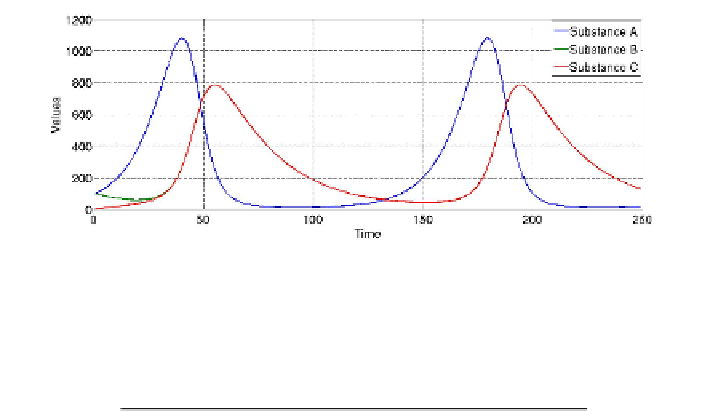Information Technology Reference
In-Depth Information
Fig. 3.3
The Sirius dynamics
Ta b l e 3 . 7
The duality between substances and reactions
Notation
Description
R
−
(
x
)
reactions consuming substance
x
R
+
(
x
)
reactions producing substance
x
R
o
(
x
)
reactions consuming or producing substance
x
S
−
(
r
)
substances consumed by reaction
r
S
+
(
r
)
substances produced by reaction
r
S
o
(
r
)
substances consumed or produced by reaction
r
3.1.1
Lotka-Volterra Dynamics
The Lotka-Volterra model is the simplest model of predator-prey interactions. The
model was developed independently by Lotka ([89] and Volterra [116] and pertains
to a population of individuals of two species: a prey species
x
and a predator species
y
. It was observed that, in time, the numbers of individuals of the two types oscil-
late according to a regular pattern. The reason for this oscillating dynamics can be
qualitatively explained by considering that predators need prey for increasing their
number but, at the same time, if the number of predators is too big, then prey can-
not satisfy their sustainment, therefore predators decrease, and consequently prey
can survive more easily so that prey population increases. The differential model of
prey-predator dynamics is described by the following equations, where
A
D
are
interaction parameters related to the average mortality and reproduction factors of
the two species, and to the predator voracity, that is, the average percentage of prey
eaten by predators in a time unit. In this way, under suitable simplifications (prey
consumption is due only to predation, no other factors influence the dynamics, and
these influences are almost stable within the considered ranges of the population
sizes), the following equations are the invariant of the considered dynamics:
,
B
,
C
,




